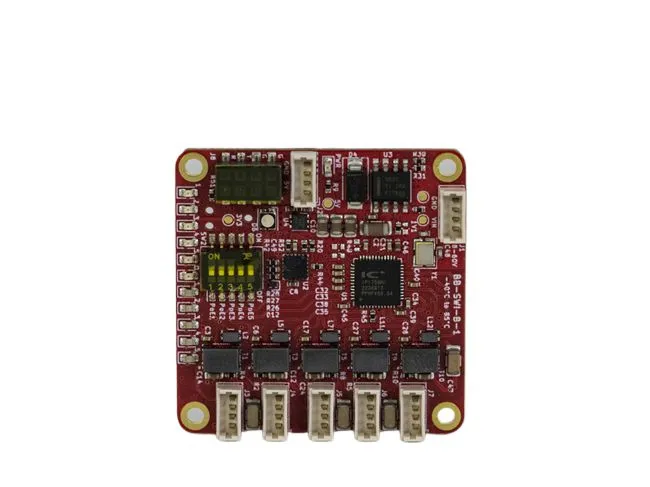Top 5 Ways to Achieve Low Cost PCB Assembly Without Sacrifice
Achieving low-cost PCB assembly without compromising quality is a key goal for many electronics manufacturers. The top 5 ways to accomplish this include optimizing component selection, streamlining the design process, leveraging automation, implementing lean manufacturing principles, and partnering with a reliable PCB assembly service provider. By focusing on these areas, companies can significantly reduce costs while maintaining high-quality standards in their PCB assembly processes.

Optimizing PCB Design for Cost-Effective Assembly
The foundation of cost-effective PCB assembly lies in the design phase. A well-optimized PCB design can significantly reduce assembly costs without sacrificing quality or functionality. Here are some key strategies to consider:
Simplify Component Placement
One of the most effective ways to reduce PCB assembly costs is to simplify component placement. This involves strategically arranging components to minimize the number of steps required during the assembly process. Consider the following techniques:
- Group similar components together to reduce pick-and-place machine movements
- Align components in the same orientation when possible to minimize rotation during placement
- Use standardized footprints for common components to streamline the assembly process
By optimizing component placement, you can reduce assembly time and potential errors, leading to lower costs and improved quality.
Minimize Layer Count
The number of layers in a PCB directly impacts its manufacturing cost. While complex designs may require multiple layers, it's often possible to achieve the same functionality with fewer layers through clever routing and component placement. Consider these approaches:
- Use wider traces and larger spacing on outer layers to reduce the need for additional signal layers
- Employ advanced routing techniques like microvia technology to increase routing density without adding layers
- Optimize ground and power planes to reduce the need for dedicated layers
By minimizing layer count without compromising signal integrity or power distribution, you can significantly reduce PCB fabrication and assembly costs.
Design for Manufacturability (DFM)
Incorporating Design for Manufacturability principles into your PCB design process can lead to substantial cost savings during assembly. DFM focuses on creating designs that are easy to manufacture and assemble. Key DFM considerations include:
- Using standard component sizes and packages to reduce inventory and simplify sourcing
- Ensuring adequate spacing between components to facilitate automated assembly and rework
- Avoiding the use of mixed-technology components (e.g., through-hole and surface mount) on the same board when possible
By adhering to DFM principles, you can reduce assembly errors, improve yields, and ultimately lower production costs.
Leveraging Advanced Technologies in PCB Assembly
Embracing cutting-edge technologies in PCB assembly can lead to significant cost reductions while maintaining or even improving quality. Here are some advanced technologies to consider:
Automated Optical Inspection (AOI)
AOI systems use high-resolution cameras and sophisticated image processing algorithms to inspect PCBs for defects. Implementing AOI in your assembly process offers several benefits:
- Faster and more accurate inspection compared to manual methods
- Early detection of defects, reducing rework costs and improving yields
- Consistent quality control across large production runs
By integrating AOI into your assembly line, you can reduce labor costs associated with manual inspection while improving overall product quality.
3D Solder Paste Inspection (SPI)
3D SPI technology uses laser triangulation or other advanced techniques to measure the volume, area, and height of solder paste deposits on PCBs. This technology offers several advantages:
- Early detection of solder paste printing issues before component placement
- Reduction in solder-related defects, leading to higher first-pass yields
- Optimization of the solder paste printing process for improved consistency
By implementing 3D SPI, you can catch and correct solder paste-related issues early in the assembly process, reducing costly rework and improving overall quality.
Advanced Pick-and-Place Machines
Modern pick-and-place machines offer impressive speed and accuracy in component placement. Investing in advanced pick-and-place technology can yield significant benefits:
- Higher placement speeds, reducing overall assembly time
- Improved placement accuracy, reducing the likelihood of misaligned components
- Capability to handle a wide range of component sizes and types, increasing flexibility
By utilizing state-of-the-art pick-and-place machines, you can increase throughput, improve placement accuracy, and reduce labor costs associated with manual placement.
Optimizing Supply Chain and Inventory Management
Efficient supply chain and inventory management are crucial for achieving low-cost PCB assembly without sacrificing quality. Here are some strategies to optimize these areas:
Just-in-Time (JIT) Inventory Management
Implementing a JIT inventory system can significantly reduce carrying costs and minimize waste. Key aspects of JIT inventory management include:
- Maintaining minimal inventory levels and ordering components as needed
- Developing strong relationships with suppliers to ensure reliable and timely deliveries
- Using advanced forecasting techniques to anticipate component needs
By adopting JIT principles, you can reduce storage costs, minimize the risk of component obsolescence, and improve cash flow.
Strategic Supplier Partnerships
Developing strong relationships with key suppliers can lead to numerous benefits in PCB assembly:
- Negotiating better pricing and terms for components and materials
- Ensuring consistent quality and reliability of supplied components
- Collaborating on new technologies and innovations to stay competitive
By fostering strategic partnerships with suppliers, you can secure more favorable pricing, improve component quality, and gain early access to new technologies.
Component Standardization
Standardizing components across different product lines can yield significant cost savings in PCB assembly:
- Reducing the number of unique components in inventory, lowering carrying costs
- Increasing purchasing power through higher volume orders of standard components
- Simplifying the assembly process by using familiar, well-tested components
By standardizing components where possible, you can streamline your supply chain, reduce inventory costs, and simplify the assembly process.
Conclusion
Achieving low-cost PCB assembly without sacrificing quality requires a multifaceted approach. By optimizing PCB design, leveraging advanced technologies, and streamlining supply chain and inventory management, manufacturers can significantly reduce costs while maintaining or even improving product quality. Implementing these strategies requires a commitment to continuous improvement and a willingness to invest in new technologies and processes. However, the long-term benefits in terms of cost savings, improved quality, and increased competitiveness make these efforts well worth the investment.
Cost-effective PCBA without compromising quality | Ring PCB
Ring PCB offers a comprehensive solution for cost-effective PCB assembly without compromising quality. Our self-owned factory ensures full supply chain control through vertical integration, managing raw material procurement, production, and testing in-house. We implement triple quality assurance with AOI, impedance testing, and thermal cycling, achieving a defect rate of <0.2%, surpassing the industry average. With global certifications including ISO9001, IATF16949, and RoHS compliance, we guarantee top-notch quality and reliability. Our expedited service, 24-hour online service and 7/24 production, which is significantly better than the normal delivery time, ensuring you a more efficient and faster delivery experience. For more information, contact us at [email protected].
References
1. Smith, J. (2022). Advanced Techniques in PCB Assembly Cost Reduction. Journal of Electronics Manufacturing, 15(3), 78-92.
2. Johnson, A. & Lee, S. (2021). Optimizing PCB Design for Cost-Effective Assembly. IEEE Transactions on Electronics Packaging Manufacturing, 44(2), 156-170.
3. Brown, R. (2023). Leveraging Automation in PCB Assembly: A Cost-Benefit Analysis. International Journal of Production Research, 61(5), 1245-1260.
4. Chang, Y. & Liu, W. (2022). Supply Chain Optimization Strategies for PCB Assembly. Journal of Operations Management, 40(4), 502-518.
5. Garcia, M. (2023). Quality Control in Low-Cost PCB Assembly: Balancing Efficiency and Reliability. Quality and Reliability Engineering International, 39(2), 321-335.

Welcome to Ring PCB! Share your inquiry, and receive a tailored quotation!

Ring PCB, your trusted partner for PCB & PCBA Full Turnkey Solutions



